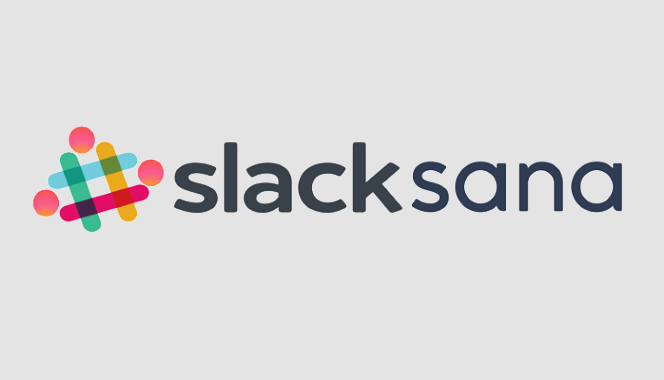
How Slack and Asana Made Our Lives Easier As A VC Firm
As a VC firm, we receive many deals every week. They come through different channels, some through LinkedIn and Twitter and some through email (personal and work). We used to ask everyone to send the pitch deck to our work email so we can manage all the pipeline from one place.
But email has many other uses! There are newsletters we receive on weekly basis, and some updates from here and there. There are also emails from other VCs, advisors, mentors, event organizers, lawyers and other service providers.
On the other hand, although our investment team is only four, but we’re in different locations and we travel a lot. So we used email a lot for internal communication. Add to that all corporate matters within the group like HR, finance, and admin stuff.
We naturally started to use WhatsApp for quick internal communications. That helped to reduce email usage a bit, and made it faster to reply to quick questions (when it’s an email there is a psychological assumption that it’s not urgent and the reply can be sent later, but for chat, it’s now by nature!). But WhatsApp created even more problems as all conversations are mixed up and there is no subject line, threads, or any way to categorize or separate discussions.
When it comes to the startups pipeline, as a new VC firm with less than 2 years of operations, we didn’t use any CRM tool. That was a mistake! We had more deals than what we can handle as a small team, and thus, we started to lose track of all the startups we met, we started to take more time than we should to reply to founders, and we couldn’t proactively follow up with all of them.
Finally, when it comes to internal projects & tasks, we also used email! Some of those emails had 10s of threads!
How We Handled Email Last Year
We used email for all of the above, and because we received too many emails every day, we needed to prioritize reply, so we used to have a folder in email named “To Follow Up” and another one named “To Act On”, a folder for every closed deal, and many other folders!
As individuals, we used 10s of online and mobile tools. But as a team, our work was revolving around:
- Email (mainly for everything),
- Skype (for calls with founders and for internal team calls),
- Evernote (for taking notes while having the calls and for knowledge management),
- Dropbox (for file storage and sharing).
We thought this would be sufficient to run a small firm.
Using SharePoint For Few Months
Mid last year, we took a decision to use more tools, and we tried Microsoft SharePoint. We kept Skype of course, but we used OneNote instead of Evernote and OneDrive instead of Dropbox.
To be honest, SharePoint has almost everything, for example I was surprised to know that they have a collaboration tool that enabled us to concurrently edit a Word or Excel file online together (like Google Docs), but access and usability was a big issue, specially that we’re used to Google Docs individually!
Researching New Tools
By the end of last year, we took the decision to abandon Microsoft and try other tools. As entrepreneurs we used many other tools and we have invested in startups that experimented with even more tools.
We considered all the following:
For Internal Communication:
- Slack
For Project/Task Management
- Jira
- Asana
- Basecamp
- Trello
- Write
For CRM:
- Highrise
- RelateIQ
- IOGrow
- Many others
For Knowledge Management
- Confluence
- Guru
- Google Docs
In addition, several add-ons/apps and integrations among those tool, and integrations with email were considered
After all this, and for now, we decided to keep email and file storage on the existing Microsoft infrastructure with the corporation (Outlook and OneDrive), we also kept Skype for calls. We decided to use Slack for internal communication, and Asana for project/task management, Google Docs for knowledge management, and we’re still not decided on CRM as Asana might be enough for now. But we will eventually need to find a proper CRM that fits our needs as a VC firm.
How We Use Slack and Asana
Between Slack and Asana, and after using them for a month now, we can’t imagine our work without them! Our email accounts are finally free for mainly founders and other external partners. We even moved all newsletters and updates subscriptions to our personal email accounts.
In addition to the General and Random (which we called Fun instead of Random) channels on Slack, and the side projects and tasks on Asana, we created a Slack channel and an Asana task for every startup in our pipeline.
We started to set a due date (usually 3 weeks) to decide and get the deal out of the sourcing pipeline, I mean 3 weeks to do the basic research and analysis, meet or have calls with the founders as much as needed, finalize the main terms (amount and valuation), and decide whether we want to proceed to Due Diligence (DD) or not. Then we create a new due date for DD and closing.
In that project, we assign tasks and subtasks for each of the team members as needed, we upload the documents there (pitch deck, research reports, DD reports, etc…), and whenever we have a meeting or Skype call with the founders we add all the notes there. All our official comments for the deal are on Asana and all the discussions are on Slack. In addition, all files are kept in Sync on OneDrive as a backup.
What Do You Use? and Why?
We would love to learn more about what you use on daily basis, how you use it, and what was the thought process in selecting the tools.




 I must say that the VC industry is in an exciting stage, but it also has it challenges. The VC firms are expected, in addition to providing funds, to play a more substantial role perhaps even larger than their counterparts in Silicon Valley. They have to act as advisor, mentor or consultant to the young entrepreneurs and provide strategic inputs to the startups. Entrepreneurs need strong support at every stage of the startup process, requiring a great deal of time and effort from VC firms. This is where the dynamics in MENA are different from the rest of the world & we need to strive to work together in a fruitful & organized manner.
I must say that the VC industry is in an exciting stage, but it also has it challenges. The VC firms are expected, in addition to providing funds, to play a more substantial role perhaps even larger than their counterparts in Silicon Valley. They have to act as advisor, mentor or consultant to the young entrepreneurs and provide strategic inputs to the startups. Entrepreneurs need strong support at every stage of the startup process, requiring a great deal of time and effort from VC firms. This is where the dynamics in MENA are different from the rest of the world & we need to strive to work together in a fruitful & organized manner.